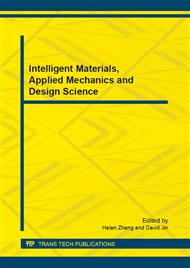p.201
p.205
p.209
p.213
p.217
p.221
p.225
p.229
p.233
Experimental Investigation of Mechanical Behavior of Carbon-Nanotube Reinforced Cement Mortar
Abstract:
In this study, effective dispersion of different amount of multiwall carbon nanotubes was achieved using a surfactant and in combination with the use of ultrasonic energy. The effects of surfactant and surfactant concentration on the plain cement mortar were investigated. Moreover, the mechanical behaviors of the carbon-nanotube reinforced composites were also analyzed. Experimental results indicate that the application of ultrasonic energy is absolutely necessary to produce a satisfactory dispersion of MWCNTs, and there exists an optimum weight ratio of surfactant to MWCNTs. It is found that the proper dispersion of MWCNTs can remarkably improve the flexural strength, compressive strength, and the toughness of the cement mortar composites.
Info:
Periodical:
Pages:
217-220
Citation:
Online since:
November 2011
Authors:
Keywords:
Price:
Сopyright:
© 2012 Trans Tech Publications Ltd. All Rights Reserved
Share:
Citation:


